#videocraft international
Explore tagged Tumblr posts
Text
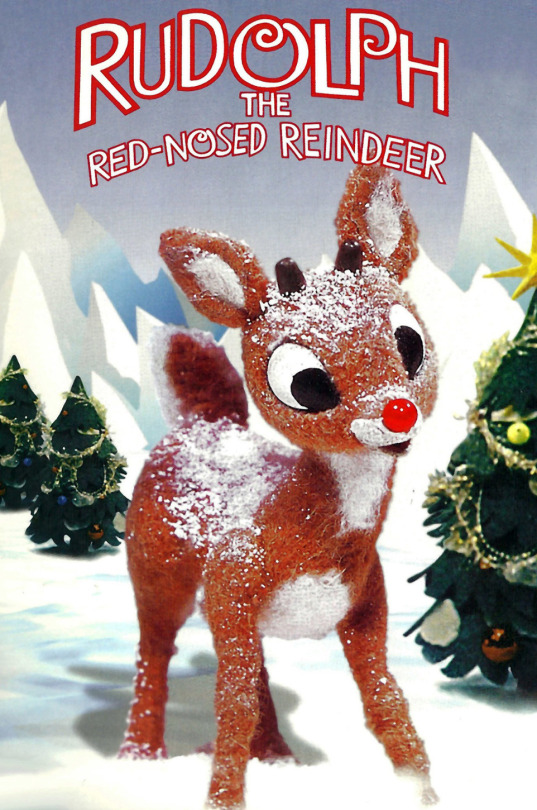
#movies#polls#rudolph the red nosed reindeer#rudolph the red nosed reindeer 1964#rudolph the red nosed reindeer movie#60s movies#larry roemer#rankin/bass#rankin/bass productions#videocraft international#requested#have you seen this movie poll
176 notes
·
View notes
Photo
Rudolph's reaction to Clarice's song From the classic holiday special "Rudolph the Red-Nosed Reindeer" 50th anniversary DVD and Blu-ray (2014), Classic Media, LLC., DreamWorks Animation. Rudolph the Red-Nosed Reindeer is a 1964 Christmas animated television special produced by Videocraft International, Ltd. and currently distributed by NBCUniversal Television Distribution (later known as NBCUniversal Syndication Studios). Pinterest
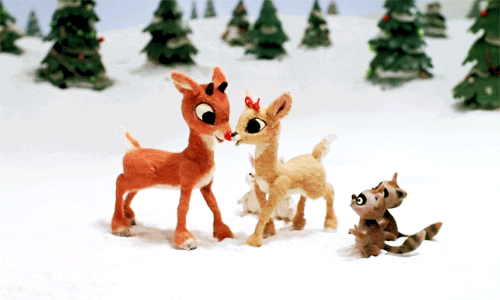
#Rudolph#reindeer#Rudolph the Red-Nosed Reindeer#Clarice#animation#50th anniversary DVD and Blu-ray#2014#Classic Media#DreamWorks#Animation#Christmas#snow#1964#television special#Videocraft International#NBCUniversal Television Distribution#NBCUniversal Syndication Studios#Приключения оленёнка Рудольфа#Rudolph mit der roten Nase#Rudolf el reno de la nariz roja#love#xmas
3K notes
·
View notes
Photo
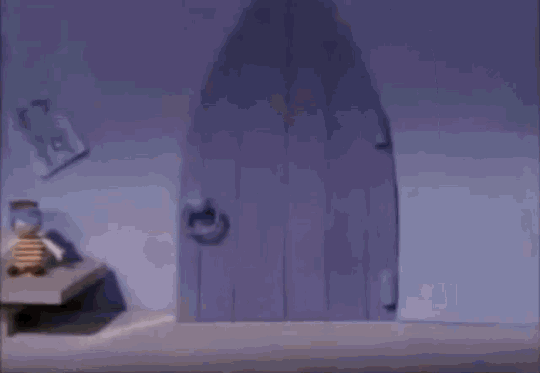
Cur exercitationi alforum non adfuisti?!
Why weren’t you at elf practice?!
(Fons Imaginis.)
#Elf Foreman#Boss Elf#Rudolph the Red-Nosed Reindeer#Videocraft International Ltd.#Rankin/Bass Productions#latin#latin language#latin translation#lingua latina#tagamemnon#latin fandom#latin meme#latin memes#meme#memes
6 notes
·
View notes
Text

Videocraft International, Limited
11 notes
·
View notes
Text

Liam and the others are getting away from the kronos blobs.
Liam The Marowak Belongs to me
Pokemon Belongs to Nintendo and Game Freak
Rudolph The Red Nose Reindeer Belongs to Goodtimes Entertainment and Videocraft International
Bagi, The Monster of Mighty Nature belongs to Tezuka Productions
Bambi and Zootopia Belongs to Disney
The Incredibles belongs to Disney and Pixar
#fanart#pokemon#nintendo#gamefreak#nintendofanart#marowak#pokemonfanart#kanto#cubone#oc#bambi#zootopia#gideon#rudolph the red nosed reindeer#disney#crossover#the incredibles#pixar#kronos
3 notes
·
View notes
Text
#tadahito mochinaga#animation#videocraft international#rankin/bass#rudolph the red-nosed reindeer#christmas#japan#history
13 notes
·
View notes
Text
101. Rudolph, the Red-Nosed Reindeer (1964)

3/10
Rudolph, the Red-Nosed Reindeer is just good enough for someone over the age of five to tolerate listening to from the next room. The treatment of gender, and the consequently blatantly inaccurate reindeer biology, are particularly irritating (female reindeer have antlers, for one thing.)
The animation is fairly technically advanced for ‘64, perhaps because it was partially produced in Japan, but it still hasn’t caught up to Le Roman de Renard.
#101#rudolph the red nosed reindeer#1964#larry roemer#kizo nagashima#videocraft international#american#canadian#japanese#stop motion#rankin/bass#christmas#1960s
2 notes
·
View notes
Photo

Rudolph the Red-Nosed Reindeer is a 1964 Christmas stop motion animated television special produced by Videocraft International, Ltd. (later known as Rankin/Bass Productions) It first aired December 6, 1964, on the NBC television network in the United States
424 notes
·
View notes
Text
Animation Night 76: Rankin//Bass
When it comes to naming Western animation studios, you’ve got the really old school studios from the early 20th century like Fleischer, Disney and Warner Bros. You’ve got the offshoots of Disney like Don Bluth Productions and Dreamworks. You’ve got the oddball directors like Ralph Bakshi would who hop from studio to studio, whoever would take their pitch. Head over to Europe and you find a lot of smaller studios like Cartoon Saloon, Bobbypills, Xilam or (long list of French studios) who tend to work on massively multinational collabs designed to scoop up arts funding from as many countries as possible. There are limited-animation oriented TV studios, which is to say there is Hanna-Barbera.
And then there’s Rankin/Bass!
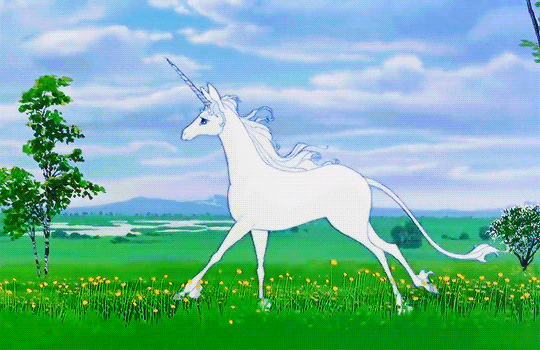
Rankin/Bass are a bit of an odd beast, in that they were perhaps one of the earliest studios to primarily produce animation via international outsourcing - and while nowadays that usually means South Korea and the Philippines, back in 1960 that largely meant Japan.
Rankin/Bass, founded naturally by two guys called Rankin and Bass (in 1960 under the name Videocraft International, based in New York), took American money and sent it to animators at some of the oldest anime studios including Toei, Eiken/TCJ and Mushi Pro to draw or stopmotion animate their films, which they would voice act with American VAs. But the studio they’re most associated with is Topcraft, which you may remember from Animation Night 70 as the studio which old Hayao chose to make Nausicaa; outside of this rare exception, Topcraft almost exclusively served Western productions, largely for Rankin and Bass. And after Topcraft vanished shortly after Nausicaa, with the majority of its animators going on to follow Miyazaki to the exciting new Studio Ghibli, but a certain portion hung on, creating Pacific Animation Corporation. You can see the full list here.
The way things seem to work at this studio, Arthur Rankin and and Jules Bass themselves directed basically all their movies. On the Japanese side, the stop motion ‘animagic’ productions are credited to Tadahito Mochinaga at MOM production; Topcraft was led by Toru Hara, formery of Toei, before he joined the Ghibli exodus.

For the first few decades of the studios existence, Rankin/Bass specialised in, well, ‘holiday specials’ for various US xtian celebrations like Christmas and Thanksgiving. Since the official line of Animation Night is that the only valid one of these is Halloween and all others are revisionist, we are going to pass over these without much comment. Which means we’re speeding forwards to the late 70s, where they started to branch out a little. First were a series of hourlong TV specials, and then, suddenly, childrens’ books were in, starting with Tolkien’s The Hobbit.
Why did this happen at this particular point in history? I’m honestly not sure, although perhaps the success of Zuiyo Eizo’s World Masterpiece Theatre series (also talked about on Night 70) had a lot to do with it? Or perhaps they were hoping to fill the space left by a weak decade at Disney? In any case, in the space of about a decade, Rankin/Bass dived head first into adapting fantasy books - among them Tolkien’s Return of the King, The Last Unicorn by Peter S Beagle (certainly the best remembered), The Flight of Dragons by Peter Dickinson, and a version of The Wind in the Willows by Kenneth Grahame.

The particular visual style of this period of Rankin/Bass movies stands out - if not necessarily always for good reasons, those giant hobbit eyes are certainly a choice! The 70s and early 80s were a period when ‘fantasy’ had not yet ossified into its current rigid commercial aesthetic (i.e. the Star Wars money machine was still revving up), watercolour paintings and fantasy artists were throwing out some fascinating feelers into aesthetic space. At its best this led to some brilliant works like Belladonna of Sadness [Animation Night 69] over in Japan, the rise of French comics artists such as Meobius, and even disjointed but very compelling Bakshi movies like Wizards.
It may contextualise things to note that this song by Leonard Nimoy was made in 1968:
youtube
...which is admittedly a full decade and then some before The Last Unicorn, but that’s the vibe. Imagine a drawing of a hobbit with a pipe on top of a weed shop... oh, you don’t have those outside of Glastonbury? Huh.
So, let’s have a look at a couple of these movies.
The Last Unicorn (1982) is actually the only one I’ve seen, capturing a suitably ethereal and melancholy atmosphere - perhaps not surprising since the book’s author Peter S. Beagle wrote the screenplay as well. Rankin/Bass were the last animation company to be approached, initially horrifying the author, but he came around after seeing the Japanese animators’ character designs (which include a fascinating cloven-hoofed look for the unicorn herself that recalls illuminated manuscripts and medieval tapestries, apparently intentionally!) and the voice actors’ performances. @mogsk reports actually meeting the guy at a screening of a remastered version with additional inbetweens, and he was very happy about the adaptation, only regretting that they hadn’t had the budget for more full animation in the first place.
It was rly cool, we were sitting in the second row to the front, and the guy in front of us kept turning around and excitedly talking about each scene, and when the lights came up at the end t hey handed him a mic and he was like ,"So yeah I'm peter s beagle!" lol
A lot of the tone has to do with the score, composed by Jimmy Webb with the band America and singer Lucy Mitchell. A reviewer is quoted as calling it “an appropriately somber and sentimental blend of fairy tale motifs and dark, Wagnerian cues” and disparaging the folk ballads which became so common in other rankin/bass films, but honestly these ballads now convey a feeling of ‘hey it’s (only just ceased to be) the 70s’ and it really works here. At least I think the OP is pretty :p
So yeah that’s who’s on it, but what’s it about? It’s a tragic little story about a unicorn who goes looking for any other survivors of the magical creature genocide by a tyrannical monster known as the Red Bull, falls into various misadventures including a traveling circus, and it gets very bleak indeed when she has to turn human to evade capture.
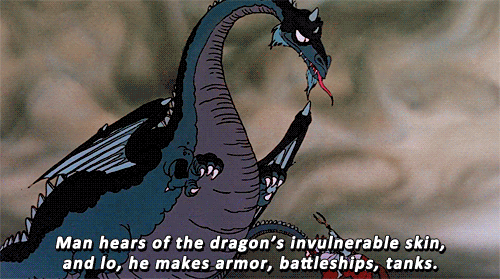
As for our second movie... one of the Tolkiens might be an obvious pick, but instead, I’m going to take the opportunity to show @mogsk the one R/B fantasy film she hasn’t seen... and nor have I so this one’s a roll of the dice. That is The Flight of Dragons by Peter Dickinson, If you look at the poster you might be like, “hey bryn have you gone mad” (you fools I was mad all along), but the film itself looks like... well, a late 70s fantasy film, so high drawing counts, some rotoscopy looking scenes, often kinda-stiff animation but also some beautiful 70s-anime approaches to stuff like fire.
This one... the plot’s pretty daft, a buncha wizards get together and have an argument about the fate of humanity. Forbidden to fight among themselves, the 'good’ wizards deputise a small group of humans to steal the bad wizard’s crown. Meanwhile a young Peter Dickinson - author of the book, self-inserting here! - gets isekaied into the past and accidentally downloaded into a dragon’s body. From there we get a kind of science vs magic subtheme which honestly sounds a little painful, as Peter attempts to fit dragons into his 20th-century ontology, but we shall see...
And oh! Guess this is actually our first isekai on here. Wasn’t expecting that. I shall save an attempt to research the history of isekai for when we end up doing an actual anime one.
Anyway, it looks like it will have some fun vocal performances and cool visuals, so hopefully a chill and amusing time, and it still has something of the colouring of 70s/early 80s anime which should give some visual appeal even if it’s not quite the technical showoffiness of something like Horus. Idk, let’s roll the device.
Animation Night 76 will start... now! I know, late again. Hopefully this will be a fun one to recover from any surgeries, illnesses, malaises, and misfortunes you may have experienced in the last week <3 head to twitch.tv/canmom when you are ready!
15 notes
·
View notes
Text

The 'other' Island of Misfit Toys, 1964 by Videocraft International
#rudolph#islandofmisfittoys#santa#christmasspecial#stopmotion#animation#krampus#stnick#videocraft#60s#aiphotography#aifilm#generativeart
1 note
·
View note
Video
Vintage Christmas Vinyl LP Cover: Rudolph the Red Nosed Reindeer, Original Soundtrack, 1964 by Classic Film Via Flickr: Album title: Rudolph the Red Nosed Reindeer Artist: Original Soundtrack, featuring Burl Ives Label / production no.: Decca Records DL 34327 Year released: 1964 General Electric was the original TV sponsor of the musical stop-action Christmas favorite, and the holiday special first aired on television on NBC in December 1964. The show was produced by Rankin-Bass Productions, Videocraft International Productions. Trivia about the Christmas show, provided by IMDb website: During the original network TV airing, commercials for General Electric featured Santa's elves from the show. Rudolph was to have been delivered to Donner and his wife by stork, but when General Electric brought in Burl Ives as the narrator, the scene was scrapped and never filmed, so that it now appears that Rudolph was born naturally. Original puppets of Santa and young Rudolph from the 1964 production went on tour in November 2007. When purchased by their new owner, both were in poor condition--Santa had mold under his beard and half of his mustache was gone, while Rudolph's nose was gone. The owner took them to stop-motion animation studio Screen Novelties International, who restored them "as a labor of love" for expenses only-$4000. The puppets originally cost $5000 each in 1964. In the original TV version of the show, Rudolph, Hermey the elf, and Yukon Cornelius visit the Island of Misfit Toys and promise to help them, but the Misfits are never mentioned again. After it was shown, the producers were inundated with letters from children complaining that nothing had been done to help the Misfit Toys. In response, Rankin-Bass produced a new short scene at the end of the show in which Santa and his reindeer, led by Rudolph, land on the Island and pick up all the toys to find homes for them, which has ever since been the standard version of the show run during the holidays.
#album cover#music#vinyl#record#album#LP#long playing#color#classic#retro#nostalgic#nostalgia#ephemeral#old#vintage#entertainment#Canon#musik#Christmas#1964#1960s#holiday#Xmas#TV#television#Burl Ives#musical#snowman#reindeer#animal
2 notes
·
View notes
Photo






FRÖST¥ TH£ SŇŐ₩MĀŅ 1950 TH£M£ SÖŃG JÎMM¥ DŪRÂŅT£ PÄÑT£R∆'SH∆DØ₩ ØFFÏÇÏÅL VÏD£Ø https://youtu.be/vjscH2WBWjw L¥RIK: Frosty The Snowman Jimmy Durante Frosty the snowman was a jolly happy soul With a corncob pipe and a button nose And two eyes made out of coal Frosty the snowman is a fairytale they say He was made of snow but the children Know how he came to life one day There must have been some magic in that old silk hat they found For when they placed it on his head He began to dance around Frosty the snowman Was alive as he could be And the children say he could laugh And play just the same as you and me Frosty the snowman Knew the sun was hot that day So he said Let's run and We'll have some fun Now before I melt away Down to the village With a broomstick in his hand Running here and there all Around the square saying Catch me if you can He led them down the streets of town Right to the traffic cop And he only paused a moment when He heard him holler "stop!" Thumpity-thump-thump Thumpity-thump-thump Look at Frosty go Thumpity-thump-thump Thumpity-thump-thump Over the hills of snow Frosty the snowman was a jolly happy soul With a corncob pipe and a button nose And two eyes made out of coal Frosty the snow man Had to hurry on his way But he waved goodbye saying Don't you cry I'll be back on Christmas Day! "Frosty the Snowman" (or "Frosty the Snow Man") is a popular Christmas song written by Walter "Jack" Rollins and Steve Nelson, and first recorded by Gene Autry and the Cass County Boys in 1950 and later recorded by Jimmy Durante, releasing it as a single. It was written after the success of Autry's recording of "Rudolph the Red-Nosed Reindeer" the previous year; Rollins and Nelson shipped the new song to Autry, who recorded "Frosty" in search of another seasonal hit. Like "Rudolph", "Frosty" was subsequently adapted to other media including a popular television special by Rankin/Bass Productions (formerly known as Videocraft International), Frosty the Snowman
0 notes
Photo

#merryChristmas #classical #classic #christmas #songs #FrostytheSnowman" (or "Frosty the Snow Man") is a popular Christmas song written by #WalterJackRollins and #SteveNelson, and first recorded by #GeneAutry and the Cass County Boys in 1950. It was written after the success of Autry's recording of "Rudolph the Red-Nosed Reindeer" the previous year; Rollins and Nelson shipped the new song to Autry, who recorded "Frosty" in search of another seasonal hit. Like "Rudolph", #Frosty was subsequently adapted to other media including a popular television special by #RankinBassProductions (formerly known as Videocraft International), Frosty the Snowman. The ancillary rights to the Frosty the Snowman character are owned by Warner Bros.,but due to the prominence of the TV special, merchandising of the character is generally licensed in tandem with that special's current owners, DreamWorks Classics. #musiceducation #musichistory #rnneducation #rhythmnnews_edu #rhythmnnews
#frostythesnowman#musichistory#merrychristmas#classic#walterjackrollins#frosty#classical#rankinbassproductions#rnneducation#rhythmnnews#christmas#stevenelson#songs#geneautry#musiceducation#rhythmnnews_edu
0 notes
Photo

Rankin Bass Productions - VideoCraft International Limited
49 notes
·
View notes
Photo








13 Stop Motion Christmas Classics
http://www.clipd.com/movies/6901/13-stop-motion-christmas-classics-that-leave-you-begging-for-more
Rankin/Bass Productions, Inc. (founded as Videocraft International, Ltd.) was an American production company, known for its seasonal television specials, particularly its work in stop motion animation. Rankin/Bass stop-motion features are recognisable by their visual style of doll-like characters with spheroid body parts, and ubiquitous powdery snow using an animation technique called "Animagic". Often, traditional cel animation scenes of falling snow would be projected over the action to create the effect of a snowfall.
Nearly all of the studio's animation was outsourced to at least five Japanese animation companies: Topcraft, Mushi Production, Toei Doga, TCJ (Television Corporation of Japan), and MOM Production.
Full list of Rankin/Bass Christmas specials
Title Narrator Release date Rudolph the Red-Nosed Reindeer Burl Ives (as Sam the Snowman) December 6, 1964 Cricket on the Hearth Danny Thomas December 18, 1967 The Little Drummer Boy Greer Garson December 16, 1968 Frosty the Snowman Jimmy Durante December 7, 1969 Santa Claus is Comin' to Town Fred Astaire (as S. D. Kluger) December 14, 1970 'Twas the Night Before Christmas Joel Grey December 8, 1974 The Year Without a Santa Claus Shirley Booth (as Mrs. Claus) December 10, 1974 The First Christmas: The Story of the First Christmas Snow Angela Lansbury (as Sister Teresa) December 19, 1975 Frosty's Winter Wonderland Andy Griffith December 2, 1976 Rudolph's Shiny New Year Red Skelton (as Father Time) December 10, 1976 The Little Drummer Boy, Book II Greer Garson December 13, 1976 Nestor, the Long-Eared Christmas Donkey Roger Miller (as Speiltoe) December 3, 1977 The Stingiest Man in Town Tom Bosley (as B.A.H. Humbug, Esq.) December 23, 1978 Rudolph and Frosty's Christmas in July Mickey Rooney (as Santa Claus) June 30, 1979 Jack Frost Buddy Hackett (as Pardon-Me-Pete) December 13, 1979 Pinocchio's Christmas none December 3, 1980 The Leprechauns' Christmas Gold Art Carney December 23, 1981 The Life and Adventures of Santa Claus none December 17, 1985 Santa Baby! Eartha Kitt December 17, 2001
External links
Rick Goldschmidt's Official Enchanted World of Rankin-Bass website
Rankin/Bass
1 note
·
View note
Text
I used to watch it every Christmas

#movies#polls#rudolph the red nosed reindeer#rudolph the red nosed reindeer 1964#rudolph the red nosed reindeer movie#60s movies#larry roemer#rankin/bass#rankin/bass productions#videocraft international#requested#have you seen this movie poll
176 notes
·
View notes